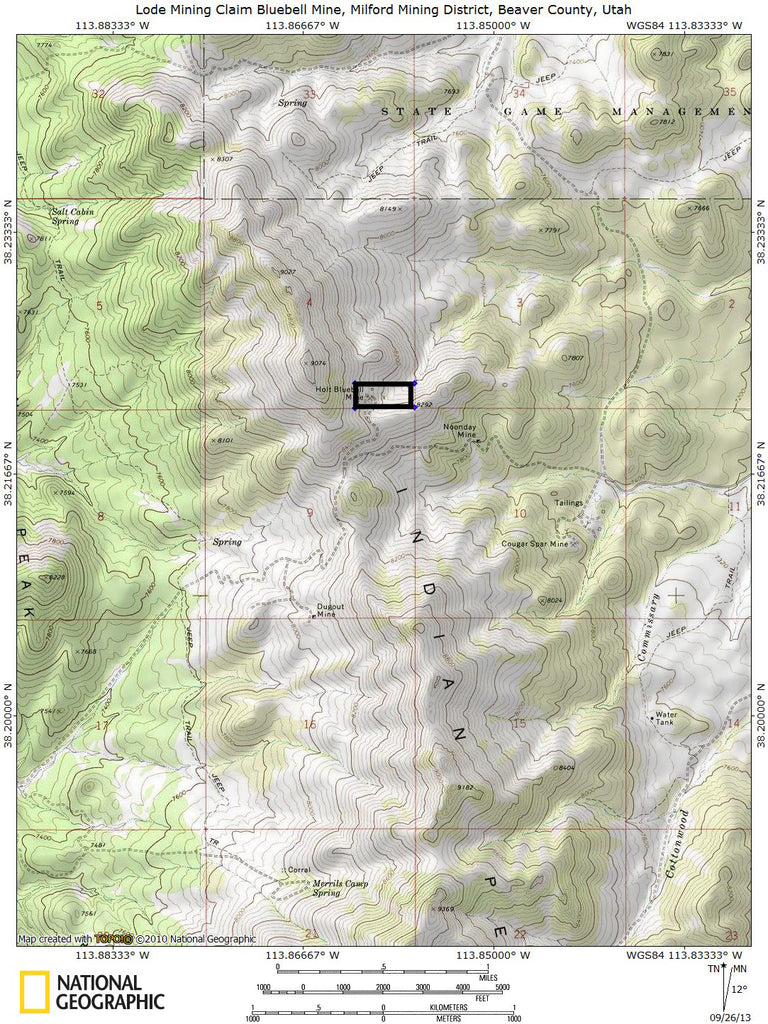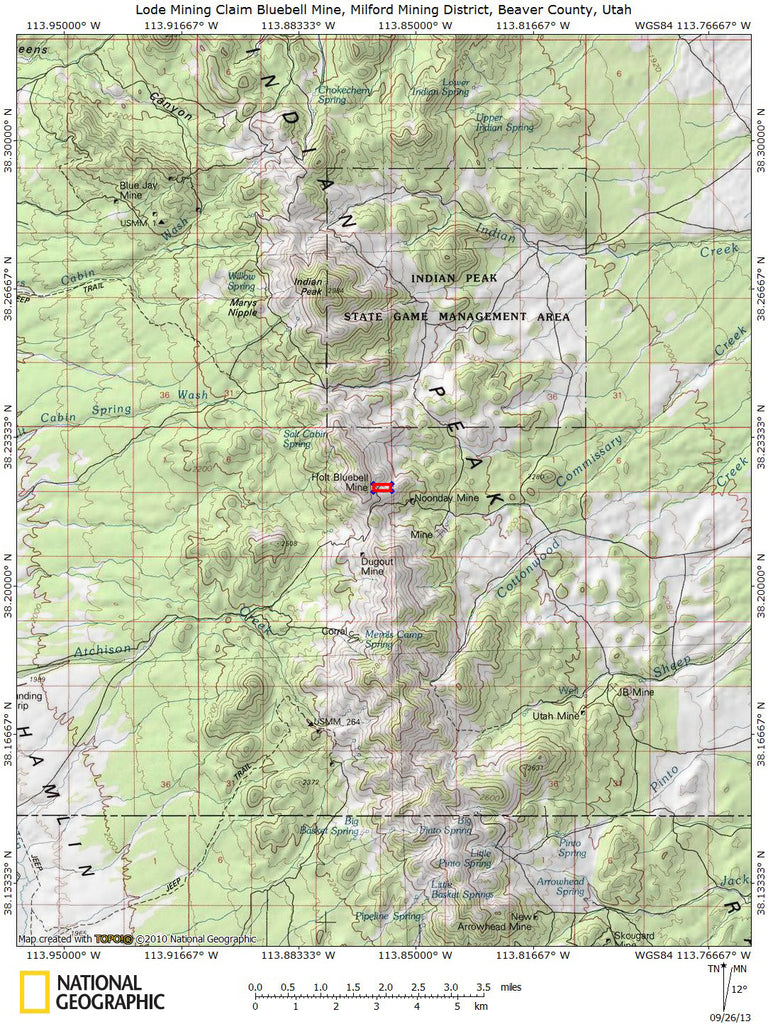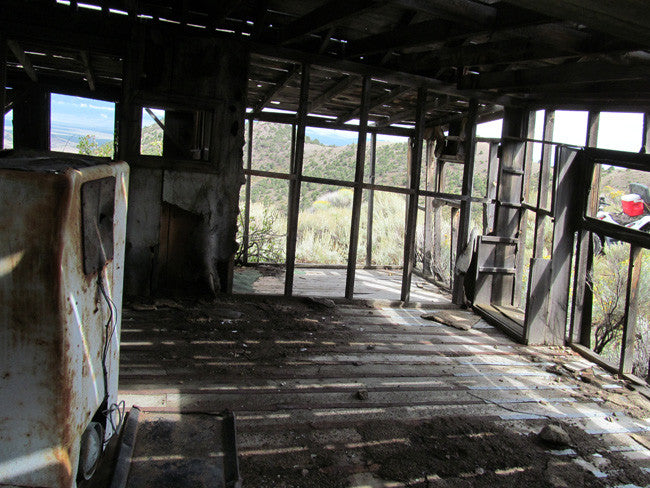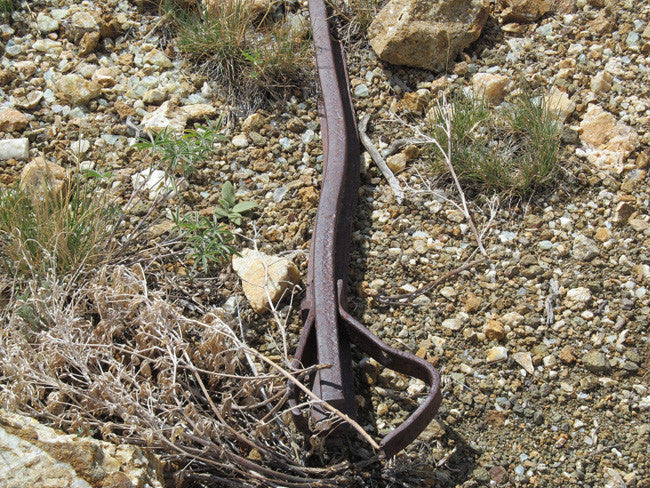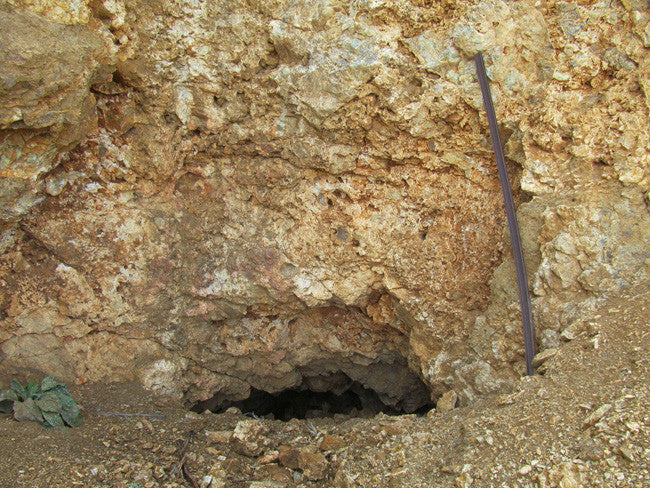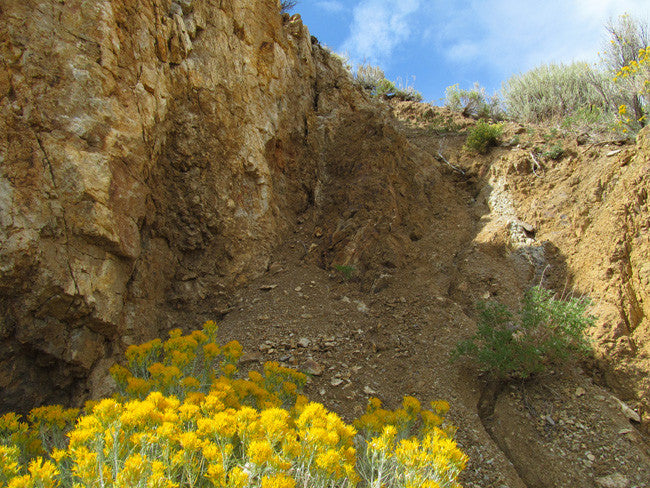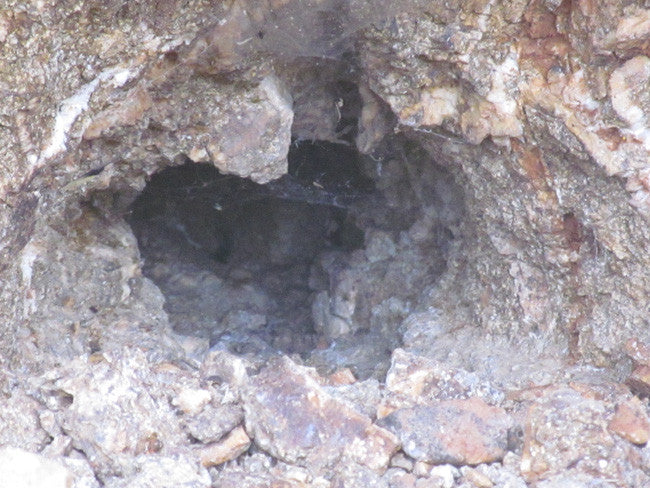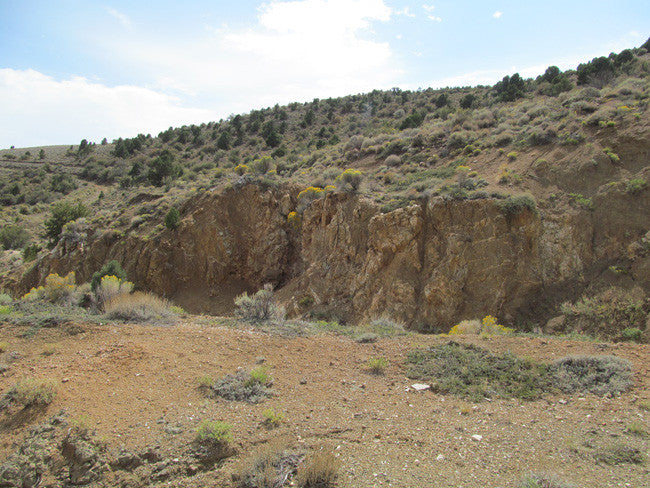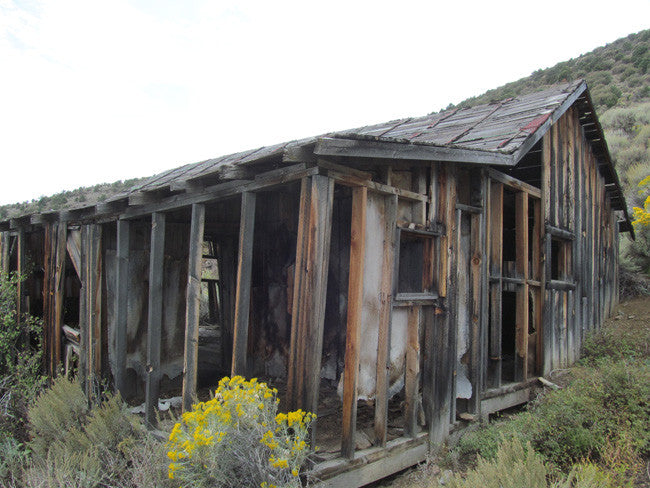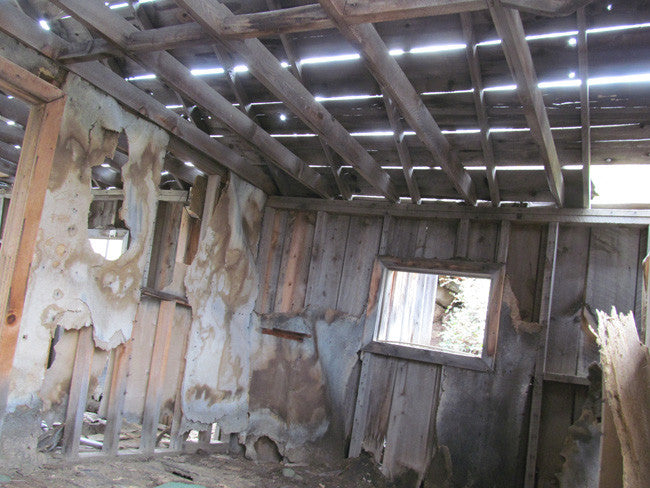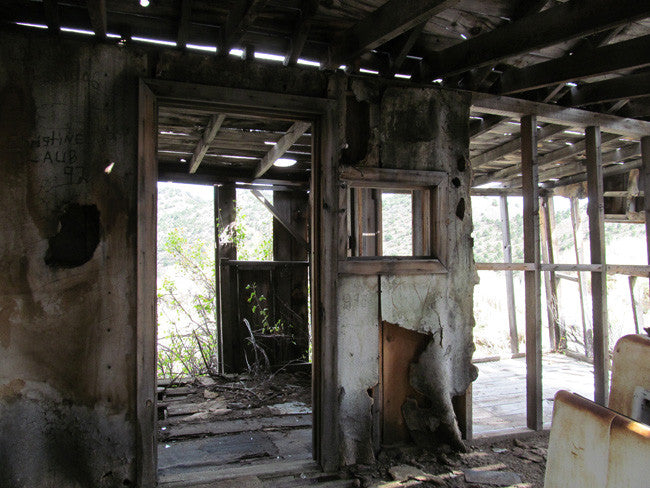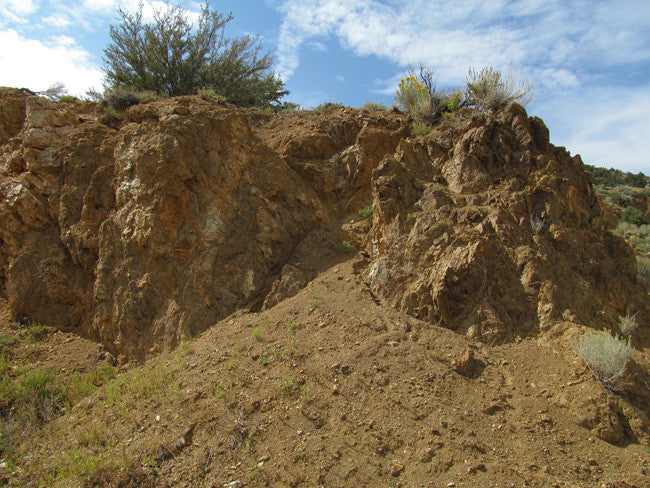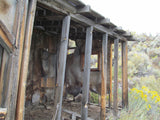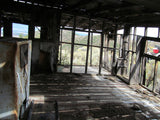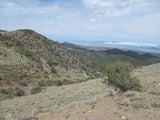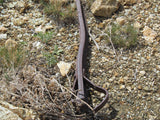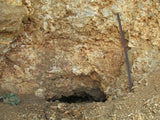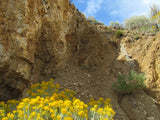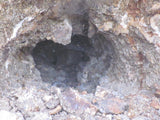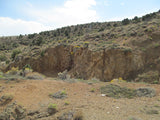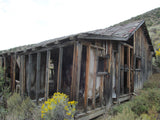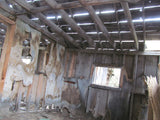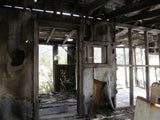Description
This historic mine has been owned by the Department of Land Transfer Information for almost a decade now. There is both Gold and Fluorite, and thus far we have pulled around 300Lbs of fluorite from this mine.
SAN FRANCISCO MINING DISTRICT
Location
The San Francisco mining district is in the southern one-third of the San Francisco mountain range approximately 15 miles west of the town of Milford in
Beaver County. The district can be reached by traveling west from Milford on State Highway 21 to the ghost town of Frisco.
Production
From 1870 to 1976, the San Francisco district produced 2.36 million tons of ore that yielded 44,900 ounces of gold, 19.6 million ounces of silver, 44.1 million pounds of copper, 405 million pounds of lead, 46.8 million pounds of zinc, and 892 pounds of tungsten.
History
In 1870, the Cactus ore body was the first metallic mineral deposit discovered here, and the district was formally organized in 1871. Four years later, the Horn Silver ore body (the largest lead-silver ore body ever found in Utah) was discovered by James Ryan and Samuel Hawkes (Butler, 1913). These two prospectors sunk a shaft 30 feet and encountered chlorargyrite or horn silver (a rich silver ore), hence the name, Horn Silver mine.
Fearing that the ore deposit would be small, they decided to sell the claim five months later, in 1876, to A.G. Campbell, Matthew Cullen, Dennis Ryan, and A. Byram for $25,000. These new owners proceeded to develop the ore body, erect a smelter, and process and sell the ore. During the three-year period from 1876 to 1879, the total value of mine production was $2.54 million, which included almost 50 percent paid out as dividends. In 1879, they sold the greater part of their interest to the newly incorporated company, Horn Silver Mining, for $5 million.
The town of Frisco was established and by 1880 had about 800 inhabitants. Drinking water was brought to the town via the railroad from Black Rock, Utah about 30 miles to the east, or hauled by wagon for 10 miles from springs in the Wah Wah Mountains to the west. From 1880 to February 12, 1885, the mine was a constant producer until the upper 800 feet of the original shaft caved in. The desire for high production possibly caused disregard for good mining practice; miners reported the mine creaking and shifting prior to the cave-in. Luckily, the mine collapsed during a shift change and no one was hurt.
Mining resumed in 1886 and continued until 1952 with a brief period of inactivity from 1932 to 1937. From 1875 to 1952, the Horn Silver mine produced 834,000 tons of ore yielding 196,000 tons of lead, 17.9 million ounces of silver, 25,700 ounces of gold, 9,650 pounds of copper, and 23,300 pounds of zinc (Wray, in preparation).
Other mines that produced ore in the district include the Beaver Carbonate group, Cactus, King David, Cupric, and the Frisco Contact. Of these, the Beaver Carbonate group (including the Carbonate, Rattler, and Quadmetals mines) was the largest silver producer. From 1879 to 1942, this group produced an estimated 92,900 tons of ore generating 12 million pounds of lead and 1.18 million ounces of silver (Wray, in preparation). The Cactus mine was the most productive for gold and copper. From 1870 to 1957, the Cactus mine produced 1.40 million tons of ore yielding 13,500 ounces of gold, 34.5 million pounds of copper, and 301,000 ounces of silver.
Geology
Sedimentary rocks in the district consist of limestone, dolomite, and shale ranging in age from Late Cambrian (515 million years old) to Late Ordovician (458 million years old). These rocks formed from sediments that were deposited on a wide, shallow shelf along the eastern edge of a large ocean. From the Middle Jurassic to early Tertiary (170 to 40 million years ago), these rocks were uplifted, folded, and faulted during the Sevier orogeny.
Approximately 35 million years ago, volcanic lava flows covered the immediate area followed by magma intrusions 31 to 28 million years ago (Best and others,
1989). Hydrothermal (hot) fluids from the cooling magma bodies migrated upward through pre-existing faults and fractures creating the ore deposits of the district: (1) replacement deposits, (2) skarns, and (3) breccia pipes.
Replacement deposits are the most important type of ore body found in the district. The Horn Silver ore body is an example of a replacement deposit that formed along the Horn Silver fault. The maximum dimensions of the ore body were approximately 700 feet along strike, 100 feet in width, and
1000 feet in length (Whelan, 1973). The ore host rock consists of Cambrian limestone and shale of the Orr Formation (approximately 515 million years old).
Skarns are small deposits found along the contact of the intruded rock (quartz monzonite) with carbonate rocks in the district. At the Cupric mine, copper ore was mined from a skarn deposit. Mineral deposits within the granodiorite in the district are referred to as breccia pipes or breccia zones. A breccia pipe is a pipe-like body composed of angular or rounded rock fragments of the country rock held together by natural mineral cement. At the Cactus mine, breccia pipes may have formed from faulting or hydrothermal alteration (where soluble material has been partly or completely removed by a hot water solution causing the overlying rock to collapse).
Mineralogy
The ore bodies at the San Francisco district contain gold, lead, silver, zinc, and copper. Primary orebearing minerals include chlorargyrite, galena, sphalerite, wurtzite, chalcopyrite, stibnite, argentite, bornite, pyrite, and hematite. The zinc sulfides of sphalerite and wurtzite are common in the ores of the Horn Silver mine. These zinc minerals will luminate a yellow color when exposed to ultraviolet light (called fluorescence). These minerals will also spark when scratched with a metallic object. This rare and unusual property is known as triboluminescence. Secondary oxidized ore minerals are cuprite, azurite, malachite, cerussite, smithsonite, scorodite, and wulfenite.
Associated minerals include barite, gypsum, chalcanthite, beaverite, jarosite, wollastonite, and calcite. Chalcanthite and gypsum coat the walls of the King David mine. Beaverite, a hydrous sulfate of copper, lead, and iron, was first found and identified from the Horn Silver mine (Butler and Schaller, 1911)
LEGAL INFORMATION
A mining claim gives the holder the right to mine on mineral-rich land that belongs to the federal government.
Mining claims are a tangible asset and show proof of all interests in minerals in the area. They can be bought, sold or used as collateral, just like any other piece of real estate. A mining claim can be sold, traded, leased, gifted, willed, used as collateral or transferred in part or in its entirety just like any other real property using a quitclaim deed which is a recordable conveyance.
We offer a lifetime guarantee should the BLM take back the land.
As the largest company in the mining industry selling legitimate and valuable historic claims, you can rest assured that you are not only covered with our 100% lifetime money-back guarantee, but you can also rest easy that there is no fine print on any of our claim listings telling you will have to deal with any games like being charged phony fees or having to pay inflated “processing” or“transfer” fees. The listing price for this mine is ALL you will pay.
We'll take care of all the paperwork and arrangements so you can enjoy your claim immediately after payment and we keep you informed through the entire process with confirmations when payment is received, when your paperwork has been overnighted to you with UPS.
